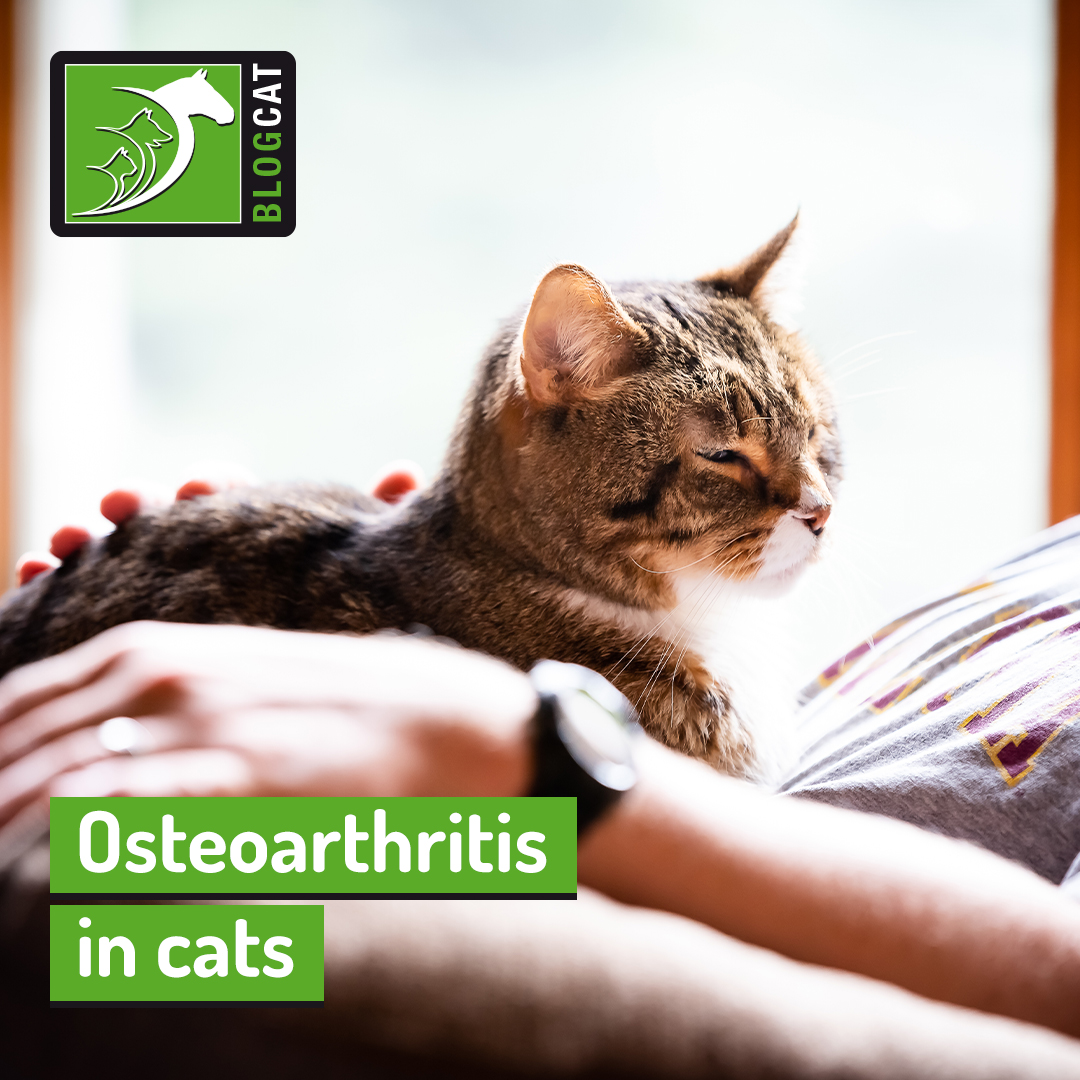
Osteoarthritis in cats

During the winter, do your bones and joints ache a little (or maybe a lot!) more? If they do, you are not alone!
Our cats can also suffer from increased joint pain due to the low temperatures and high humidity during the cold season. However, our feline friends are experts at hiding their pain and discomfort, and it may be tough to know when you need to give them a little help.
Read our blog post below to learn all about osteoarthritis in cats and how you can help your pet if necessary.
What is osteoarthritis?
Osteoarthritis is one of the leading causes of pain and difficulty moving in cats, and this problem causes the progressive destruction of cartilage, which impairs the movement of joints. Cartilage is the tough, flexible tissue that lines the joint surfaces.
Unfortunately, we don't know exactly what causes the loss of cartilage in the first place. However, we do know it is more likely in older animals, pets that have suffered injuries or that have a genetic predisposition to joint dysfunction (for instance, hip dysplasia in Maine Coon or Siamese cats).
This means that, in a large number of cases, there is no observable cause as to why your cat might be suffering from osteoarthritis.
Could my cat be in pain?
As we know, many cats will hide their pain and learn to cope before owners realise that something is wrong.
The best way to avoid this is to keep a close eye on your feline friend and not chalk up changes to things like old age or even just a phase that they are going through.
Here are some of the most common signs that your cat might be in pain:
- He or she no longer enjoys being touched and seems more temperamental when being held;
- Struggling to do things that have always been effortless such as using the litter box, jumping onto places, going through the cat flap or using the stairs;
- Significantly reduced activity, especially less time spent grooming and spending more hours sleeping.
During cold and damp weather, discomfort increases and these signs often become more apparent, leading to owners realising that something might be wrong with their beloved pet.
How can I help my cat feel better?
Curing osteoarthritis is often not possible, as most cases of feline osteoarthritis do not have an observable cause. However, there are plenty of ways to slow this disease's progression and modify your home to ensure your cat has the support and pain relief required.
Your vet will do all of the necessary tests to ensure that no underlying diseases need to be treated and then prescribe the best medication and supplements for your cat's situation.
They might also suggest that you:
- Find a litter box with smaller sides, so it is easier to use;
- Move all of his or her things to one accessible place to avoid having to use the stairs;
- Ensure sleeping places are not in draughty or cold areas, especially during autumn and winter;
- Spend time brushing him or her to make grooming less bothersome.
As we've mentioned, winter can bring an especially hard challenge for these pets, so during this time pay special attention to the ways that you can help them feel better such as limiting time out in cold weather or making their living spaces a little easier and cosier!
Managing this condition is a joint effort between you and your vet, so don't hesitate to let them know if you spot any changes or if you're struggling to help your beloved pet!
Would you like to know more about cats? Check our Feline Courses:
Feline courses
Published: 19 Jan 2023
Read the previous article: Keeping your horses comfortable in the cold

